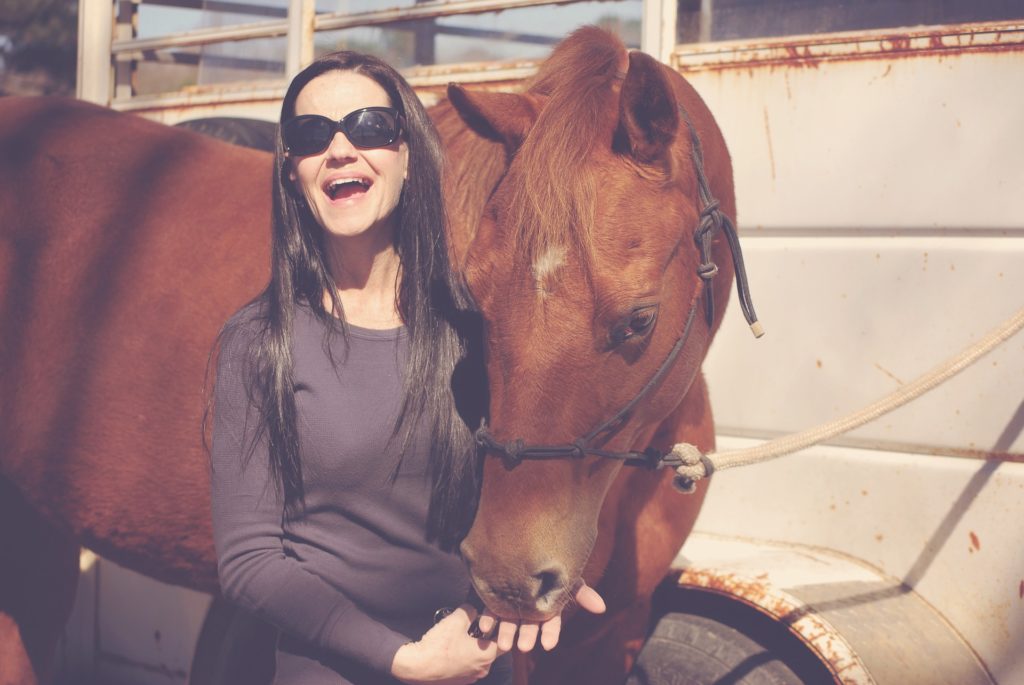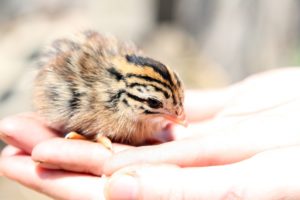- Calls to this hotline are currently being directed to Within Health or Eating Disorder Solutions
- Representatives are standing by 24/7 to help answer your questions
- All calls are confidential and HIPAA compliant
- There is no obligation or cost to call
- Eating Disorder Hope does not receive any commissions or fees dependent upon which provider you select
- Additional treatment providers are located on our directory or samhsa.gov
How Do I Know if Animal Therapy is Right For Me?

Animal assisted therapy (AAT) is a type of therapy that uses animals to enhance an individual’s physical, emotional, and social well-being, and therefore improves a person’s self-esteem, anxiety symptoms, and helps facilitate healing [2]. AAT dates back to the 1940’s when an army corporal brought his Yorkshire Terrier to a hospital to cheer wounded soldiers.
There was such a positive response that the dog continued to comfort for 12 additional years. AAT research comes from an organization called Pet Partners, formerly Delta Society, which is a research-based organization committed to promoting animal-based treatment.
They distinguish animal-assisted activities, such as seeing-eye dogs, from animal therapy, where emphasis is on psychological support.
Positive Effects of Animal Therapy
Research has shown that animals can have a calming effect on individuals by reducing blood pressure and lowering anxiety [2]. Animals tend to help with loneliness and bring out a person’s positive social characteristics. Many hospitals and nursing homes use AAT programs.
Equine assisted psychotherapy uses horses as a path for self-awareness and emotional healing. It was developed by Liz Hartel, Florence Nightingale, Boris Levinson, and Leopold and Sonia Bellack [1]. It is a form of AAT which uses the natural bond between an animal and human being to support emotional recovery.
AAT can provide psychological and physiological benefits. Research has shown with the use of animal assisted therapy individuals show decreased stress levels, reduction of anger and aggravation, decreased hostility toward self, improved social interactions, decreased heart rate and release of beta-endorphins, improved self esteem, patience, and trust in others and a sense of empowerment [1].
Children and teens are also able to participate in animal assisted therapy. Often improvements in interpersonal relationships, expression of emotional or physical distress and connection to a non judgmental and unconditional bond to another being can improve patience, respect, empathy, acceptance, confidence, assertiveness, and responsibility. It can aid in a child gaining verbal and nonverbal communication skills.
Many different animals are used for animal assisted therapy [2]. Dogs, cats, horses, and even dolphins are used. Depending on the animal therapy can take place in an institution, hospital, school, library or home. No preparation is necessary for animal therapy to take place. It is important to ensure the animal and client are a good match for each other, and that there are no allergies which could make therapy difficult.
Understanding the Role That Animals Play
Deciding to include animal therapy requires knowing what animal therapy does. Animal assisted therapy is typically used to promote socialization, provide distraction, enhance trust and improve overall well-being. It can be used in conjunction with most mind-body therapies and help with relaxation and calming in the stress response.
Even though most programs use equine therapy, emotional support dogs can also be used. An emotional support animal is to provide a therapeutic benefit through companionship and comfort [3]. We acknowledge the bond and likeness that we have as humans with animals. We search for comfort, protection, and survival.
In the late 19th and early 20th centuries, Dr Hall began to study the psyche of children, and the influence of animals on the consciousness. Children were exposed to a natural environment, like wildlife and compared their reaction to animals to that of children who were in a city environment.
Children became more aware of the animals and their role within the environment. These studies indicated that children from cities did not have the same awareness of animals [4]. Dr Levinson, in the 1960s looked at how companion animals affected children during therapy.
This research showed that the children who had animals during therapy were more inclined to communicate more freely in the therapeutic session, and showed less anxiety and improved social development [4].
Author, Amy Liu, reported that many readers shared their stories about the roles that animals have played in their journey to recovery [5].
One woman wrote about her horse stating, “She has changed my life. She’s taught me about commitment and selflessness. And for the first time since I was 12, my eating disorder came in second place…”.
Caring for an animal in animal therapy means that another being is dependent on you for basic needs such as food, shelter, and helps promote responsibility. Care for an animal can provide structure and feelings of reward, joy, and connection that come with caring for another.
Requirements for Animal Therapy
Determining the appropriateness of animal therapy means considering the realities of what it requires. It brings on additional responsibilities and can sometimes feel like a burden, especially if you are feeling overwhelmed.
es and care an animal would require.
Looking at your scheduled during recovery, and working with your team of treatment professionals to decide if you have the energy and time to care for another is an important factor to consider.
If you are unsure, you can volunteer at a pet shelter, or borrow a friends animal for the weekend to see what responsibiliti
Animal Assisted Therapy interactions are goal directed, individualized to each patient, and are directed by a healthcare professional [6]. According to the Delta Society, their Pet partners program has over 4,000 human-animal teams in the US and five countries, and provide over 600,000 hours of service [6].
Animal therapy can be much less threatening than a face-to-face therapeutic session especially if trauma or grief is part of the client’s history. Animal therapy may not appeal to everyone.
If someone has an allergy or a phobia, then the therapist can use a different method than AAT. Other individuals do not respond to animal therapy as well and other therapies may be of more benefit.
In conclusion, animal therapy can be a positive and rewarding process. It is important to look at the responsibility, interest, and timing of animal therapy in the therapeutic and recovery process for a client. Knowing what you own personal interest in animals are, as well as treatment needs can help identify if animal therapy is right for you.

Libby currently works as a counselor at Fontbonne University and is a Adjunct Professor at Saint Louis University, and is a contributing author for Addiction Hope and Eating Disorder Hope. Libby lives in the St. Louis area with her husband and two daughters. She enjoys spending time with her family, running, and watching movies.
References:
[1] http://www.goodtherapy.org/learn-about-therapy/types/animal-assisted-therapy[2] https://www.drweil.com/health-wellness/balanced-living/wellness-therapies/animal-assisted-therapy/
[3] https://guidinggolden.wordpress.com/2013/02/26/assistance-from-service-dogs-for-people-with-eating-disorders/
[4] http://www.huffingtonpost.com/entry/the-healing-aid-of-therapy-animals-in-eating-disorder_us_58c0e573e4b070e55af9ebb6
[5] http://www.centerfordiscovery.com/blog/pets-can-help-recovery/
[6] http://www.webmd.com/mental-health/features/animal-assisted-therapy#1
The opinions and views of our guest contributors are shared to provide a broad perspective of eating disorders. These are not necessarily the views of Eating Disorder Hope, but an effort to offer discussion of various issues by different concerned individuals.
We at Eating Disorder Hope understand that eating disorders result from a combination of environmental and genetic factors. If you or a loved one are suffering from an eating disorder, please know that there is hope for you, and seek immediate professional help.
Reviewed By: Jacquelyn Ekern, MS, LPC on April 4, 2017.
Published on EatingDisorderHope.com


